#Sherlock Holmes 1916
Text
let me dump all that on you (Sherlock Holmes (1916 movie))
and where to get it
47 notes
·
View notes
Text
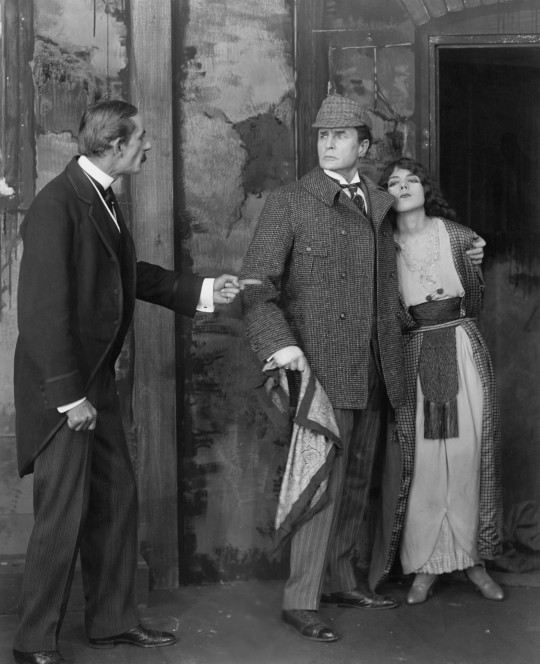
Sherlock Holmes (1916)
Edward Fielding, William Gilette, And Marjorie Kay
#Film#Silent Film#Sherlock Holmes#William Gilette#Edward Fielding#Marjorie Kay#Detectives#Mystery#Vintage#1916#1910s#10s
13 notes
·
View notes
Text
Sherlock Holmes (1916 film)
Sherlock Holmes is a 1916 American silent film starring William Gillette as Arthur Conan Doyle’s Sherlock Holmes. Directed by Arthur Berthelet, it was produced by Essanay Studios in Chicago. The screenplay was adapted from the 1899 stage play of the same name, which in turn was based on the stories, “A Scandal in Bohemia,” “The Final Problem,” and A Study in Scarlet by Arthur Conan Doyle.
All…

View On WordPress
0 notes
Text
From 1916. " Sherlock Holmes ". Starring William Gillette. This is a previously lost and rediscovered silent film. It has been fully restored. Now for some background information: Sherlock Holmes 1916 is an American silent film. The screenplay was adapted by the 1899 stage play starring William Gillette as Arthur Conan Doyle's Sherlock Holmes. It was produced by Eassanay Studios in Chicago. Released Date: May 15,1916. Running time 116 minutes (7 reels). Silent with English Intertitles. And appropriate silent music accompaniment. All surviving prints of the 1916 Sherlock Holmes were once thought to be lost. However, on October 1,2014 , it was announced that a copy had been found in a film archive in France. Preservation Status: The San Francisco Silent Film Festival and the Cinematheque Francaise announced that a print had been found in the Cinematheque collection in Paris. The restoration of the film was seen by the SFSFF board President Robert Byrne and in collaboration with Cinematheque Francaise. The French Premiere of the restored film took place in January 2015 and the US Premiere took place in May 2015. The print was found in a nitrate negative of the nine reel serial with French language Intertitles which were translated from the French back into English by Daniel Gallagher in consultation with William Gillette's original 19th century manuscripts, which are preserved at the Chicago History Museum. The film had been mixed up with other Holmes related media at the Cinematheque Francaise and had been incorrectly labeled.
0 notes
Text
hey. what if i did a retranslation back into english of the 1916 chinese translations of sherlock holmes, where the translators elaborate at length on the warmth of holmes' affection for watson
#they remove some of holmes' abruptness and arrogance in order to make room for 'dr watson i love you so so so so much'#sherlock holmes
99 notes
·
View notes
Text
Thomas Shelby Masterlist
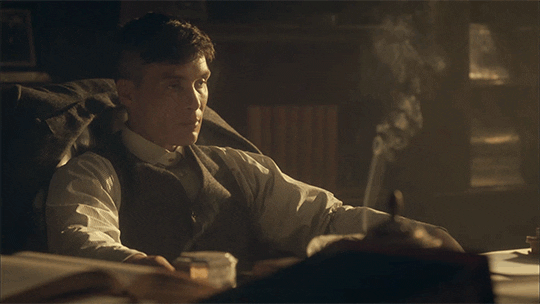
Mr Loverman Thomas receives a call and imagines the worst.
Forgotten DinnerSunday dinner was always important to Y/N, but the night ends differently after Thomas arrives over five hours too late.(+18)
Whisper of a loving HeartThomas Shelby was always drawn to Y/N, but never found the courage to invite her to dinner but when a man dances with her he can no longer stay in the background.
Safe and SoundThomas Shelby never found time to spend a day with his wife and daughter, but one day he stays home.
Bloodbath At his daughter’s 18th birthday Thomas is not enjoying the attention his daughter is receiving from the male guests but his wife can calm him down before the feast can end in a bloodbath.
Burn little witchThomas Shelby, a knight on a hunt for a witch finds his horse under the care of a woman living in the cottage instead of a wicked creature and slowly falls in love with her.
PART ONE
Fool of a Man After a fight, Thomas comes home.(+18)
Feast for Eyes Thomas comes after a long day home.(+18)
Love me tender, Y/N´s parents find out their daughter is dating Thomas Shelby.
Ragging Oceans Thomas finds his girlfriend crying by the cliffs.
Lovelier than a Dream Lazy mornings are not common in the Shelby household, but one spring morning, Thomas cannot find the motivation to get dressed.
How did you know? Y/N always had special abilities, saw the future of her family but one day after John nearly faced death, Thomas demands answers.
Stars were falling, Thomas and Y/N are stargazing and lose themselves in the beauty of the night.
Bleeding Heart Y/N takes care of Thomas after he was shot.
Forbidden Fruit Alfie Solomons finds out his younger sister is dating Thomas Shelby and forbids her to see him ever again, but his words cannot scare her.
Secret Girlfriend, Thomas Shelby, a man of many secrets, can no longer keep one of his most guarded secrets hidden after his girlfriend is in danger.
In the Shadow of Somme Thomas believes his sister is a blessed woman, never faced war nor the destruction of France, but one day they find out what their sister was up to in 1916.
Duties of a father, Thomas has not only neglected his duties as a husband but also as a father.
Duties of a Husband Thomas makes his wife know how deeply he loves and needs her.
Blinders Business As Thomas Shelby hears of a thriving business in town, he arranges a meeting with the head of the company.
I'll never be her, Finding out Thomas has been secretly seeing Grace, Y/N leaves with Charlie.
I have always loved you,Y/N finds out Thomas is warming another woman's bed and suddenly she finds herself in John's arms.
Shadows of the Untold Thomas discovers the dark past of his wife.
May I have this dance? Thomas had never found the bravery to ask Y/N to a dance, let alone talk to her, but when he notices her in the embrace of a man and hears about the men desiring to marry her, he cannot hold back.
How could you…. A rumour turned into truth, and the brothers are incapable of forgiving the youngest among them.
Dance through the Rain The romantic anniversary was planned to the smallest detail, but Thomas failed to include a rainstorm.
The Sailors Chant When Y/N's date doesn't show up, she sets off on her own through the dark streets of Birmingham.
Sealed Promise A secret, guarded like the royal crown, uncovered by Sherlock Holmes, comes to light.
The Ring In hope of getting her hand in marriage, men of high status are knocking on the door, but the man Y/N hopes to see is not among them.
The Barn Thomas and his girlfriend meet in secret, but the weather gets in the way.
Lurking in the Shadows As Halloween draws near, Charlie's mother worries that even Thomas will fear the costume of his son.
Coming Home for Christmas Returning home late after a rough day, Thomas arrives in an empty living room and not even the dog greets him.
(Un)lonely on Christmas Thomas visits Garrisons and meets the new barmaid.
Love me series
As Thomas Shelby hears Y/N´s parents are searching for a suitable husband for their child Y/N faces a loveless marriage she hoped to never encounter, but slowly the cold walls crumble as the scent of spring is dancing over the meadows.
PART ONE PART TWO PART THREE
Lost series
Thomas Shelby, a single father, lost his son at the fair and finds him in the arms of an unknown woman and is enchanted by her.
Part One Part Two Part Three
Who did this to you...?
Bruised and broken, Y/N, trapped in a loveless marriage, arrives at her best friend's house, desperately hoping someone will help her, aware she cannot return to the estate of her husband.
Part 1 Part 2 Part 3 Part 4 Part 5 Part 6 Part 7
#thomas shelby x y/n#cillian x reader#peaky blinders imagine#michael gray#michael gray x reader#tommy shelby fanfic#thomas shelby x you#tommy shelby x reader#thomas shelby fluff#arthur shelby x reader#thomas shelby#peaky blinders fanfic#thomas shelby x reader#john shelby#tommy shelby fic#tommy shelby x you#peaky fookin blinders#tommy shelby one shot#grace burgess#thomas shelby imagine#arthur shelby#peaky blinders x reader#john shelby x reader#peaky blinder fanfic#peaky blinders#peaky blinder imagine#peaky blinder headcanon#cillian murphy imagine
680 notes
·
View notes
Text
Sherlock Holmes (1916) Clips I Don't Have a Heterosexual Explanation For
youtube
While this is definitely one of my least favorite Sherlock Holmes movies I've ever seen - not because it's a silent movie, but because the plot is boring, the romance is extremely unconvincing, and I'm not clear if it understands how to be a movie in general - it sure does have some clips that seem to go somewhat against the bland heterosexuality of the movie's premise.
Especially the first clip. I can't even conceive of the thought process behind the first clip. Truly.
So I put them together into a slightly-under-one-and-a-half-minute video. Enjoy!
#red randomness#sherlock holmes#john watson#holmeswatson#being physically intimate especially in older works where masculinity was viewed in a closer manner than it is now#is certainly not indicative of homosexuality#and i wouldn't want to make anyone think that's how i feel#but if you can manage come up with a non-horny explanation for the first clip i would *love* to hear it lmao#and because that's the first clip it truly casts the following two clips in an even more fascinating light#anyway i got used to the video editing thing and i've gone mad with power
19 notes
·
View notes
Text
His Last Bow
Originally titled in full "His Last Bow. The War Service of Sherlock Holmes" and later "His Last Bow: An Epilogue of Sherlock Holmes", this was originally published in 1917.
It is the final story in His Last Bow, the final short story in the canon covered by Letters from Watson and agreed by all the key chronologists to be the final canon appearance of Holmes and Watson.
Sir Arthur Conan Doyle had openly supported British entry into the First World War in 1914.
The story came about after a visit to the Western Front in 1916; asked by a French general what Holmes was doing, Doyle had responded that he was too old to serve. He then decided to write this story as a means of boosting morale.
To put it mildly, the British public had gone a bit spy-crazy in the lead up to the war; fearing "Teutons serving them croutons" i.e. Germans living in the UK acting as intelligence agents for the Kaiser.
The Riddle of the Sands is one such work of popular literature on this theme, which is the subject of Letters from Carruthers coming in September.
There was also the fantastical works of William Le Queux, who started off with the French and Russians as his enemies before switching to the Germans; he also had his works serialised in the Daily Mail, a British middle-market tabloid that was founded in 1896 and has been happily engaging in right-wing sensationalism since to the point Wikipedia has banned them as a source. Le Queux for his part believed the Germans were out to get him for exposing their spy networks - he hadn't, they weren't and the Metropolitan Police refused him protection.
The Benz company had produced the first practical motor car in 1885; they of course later merged with Daimler to become Mercedez-Benz. I cannot find a 100hp example of their vehicles.
The German Chancellor in 1914, Theobald von Bethmann Hollweg, was a moderate, who reluctantly went along with many German policies like unrestricted submarine warfare and tried to initiate peace proposals on a number of occasions in the war before being ousted in 1917.
Flushing is the historical English name for the Dutch port of Vlissingen; it had a ferry connection to Sheerness until 1994.
At the outbreak of war, diplomats on both sides were allowed to return home unmolested, after locking down their embassies and burning anything sensitive they could not take with them.
Britain, France and Prussia had signed a treaty in 1839 guaranteeing the neutrality and independence of Belgium. The German invasion of the country on 3 August gave the UK justification for war and moved a Cabinet divided over the matter to firm unity.
There was a fear of Irish civil war at this point; the Liberal government, reliant on Irish and Labour support for a Commons majority after the two elections of 1910, had passed legislation creating a devolved government for the island, called Home Rule. This was vehemently opposed by Ulster Protestants and both sides were receiving weapons - from Germany in fact - in preparation for a fight as Whitehall tried to arrange a compromise. The Germans in fact believed the British would be distracted by a civil war, but in fact the Home Rule legislation was suspended for the duration and both militias decided to support the war effort. That stopped things... until the more radicial Irish Republic Brotherhood launched the Easter Rising of 1916.
"Window-breaking Furies" refers to the suffragette movement that sort votes for women, some of who engaged in direct action like breaking windows and also planting bombs or arson, although they made sure the latter was done when the buildings were empty to avoid killing anyone. These tactics were as controversial at the time as the tactics of modern-day groups like Just Stop Oil. When the war broke out, the suffragettes stopped their militant actions and supported the war effort; their imprisoned members being released as part of an amnesty.
John Bull is a national personification of the UK, typically a stout middle-aged man in a Union Jack waistcoast, frequently seen in cartoons at this time. He rather fell out of popular use post-war and is rarely seen today, unlike Britannia, who remains a widely used figure.
The Rosyth Dockyard was built from 1909 for refitting Royal Navy ships and submarines; although now privatised, it retains that role and is currently building the five Type 31 frigates.
Carlton Terrace was the home of the German Embassy until 1945; after the war, the property and its contents were sold off at auction. The Federal Republic of Germany set up at Belgrave Square in 1951 and remains there to this day.
Junkers were the land-owning aristocracy of Prussia, who exercised considerable political power up until 1945, at which point most of their holdings ended up in the USSR, Poland or what became East Germany. The land was broken up, usually ending up in collective farms; accused of war crimes, those Junkers who ended up in Soviet hands frequently ended up in NKVD camps or even executed. Their descendants did not get them back after reunification.
The King's English is another name for Received Pronunciation, the "standard" dialect and accent of British English.
Tokay or Tokaji is a sweet wine from the Tokaj regions of Hungary and Slovakia, the designation being protected under EU law in a similar way to Champagne. Imperial Tokay, which was the highest quality Tokaji Essencia, was reserved for the Austrian imperial cellars, often being passed to other European monarchs as gifts. This stuff is still drinkable after over 200 years and even the relatively new stuff isn't cheap.
A naval flotilla would be based at Harwich in both World Wars.
The reference to Holmes being sixty here is where the common estimate of 1854 being his birth year comes from.
Portland is a prison and young offenders' institution in Dorset. Notable past inmates include George Edalji (whose miscarriage of justice was exposed by Doyle), John Babbacombe Lee ("The Man They Couldn't Hang") and the controversial comedian Roy "Chubby" Brown.
Fratton is an area of Portsmouth.
In reality, the Home Section of the Secret Service Bureau, later MI5, had managed to identify the key German agents by monitoring their postal correspondence. The police then rounded them up in August 1914 and once the cross-sea cables were cut, contact with any agents in the UK became close to impossible. Little intelligence of any use came from them in any event; the Germans seem to have not even been aware of the British Expeditionary Force being sent to France, which was hardly a small event. Gustav Steinhauer, head of German naval intelligence's British section, got subjected to a rant about his agency's incompetence from the Kaiser that lasted the better part of two hours.
Twelve German spies would be executed during the war, eleven by firing squad at the Tower of London, which hosted its final execution (also of a spy) in 1941.
Skibbareen is a town in County Cork, now in Ireland.
The final speech by Holmes at the end also featured in the 1942 Basil Rathbone film Sherlock Holmes and the Voice of Terror, based on this story.
So Holmes and Watson drive off into the sunset. What happened to them after that? All we know is that both survived the war and at some point Dr Watson stopped writing about his dear friend. They deserve to have had a long retirement.
I will be doing these for the individual chapters of the novels next year; I have already done ones for the first two chapters of A Study in Scarlet that I will repost.
44 notes
·
View notes
Text
#sherlock holmes#sir arthur conan doyle#the final problem#house md#sherlock#bbc sherlock#elementary#the great mouse detective#big bang theory#edith meiser#enola holmes#robert downey jr#the adventures of Sherlock Holmes
139 notes
·
View notes
Text


Victoria Helen McCrae Duncan was born on November 25th 1897 in Callander.
Known as Helen Duncan, in 1944, she became last person in the UK to be tried, convicted and imprisoned under the 1735 Witchcraft Act.
Hellish Nell, as she became known, was actually a medium, and by all accounts not a very good one, the way she earned her living was to hold seances and charge plenty for her services, but she was rumbled several times as a fraud.
Nor was she the last person convicted under the 1753 Act – now repealed and replaced with the Fraudulent Mediums Act of 1951 – because in fact three other people were on trial alongside her and one of them was sent to prison, too. Yet somehow the “last witch” nickname has stuck, though records clearly show that some months after her trial and imprisonment in September 1944, one Jane York, 72, from Forest Gate, East London, was charged under the same act with seven counts of pretending to conjure up spirits of the dead. Incredibly, York was simply bound over for the sum of £5 to be of good behaviour for three years.
Ah, but that happened after D-Day, and there is no question when you examine the evidence that the authorities wanted to make an example of Helen Duncan and put her away for the summer of 1944.
From an early age her own family saw her as fey, and her mother was mortified when the child’s behaviour became impossible – she would predict doom and destruction for all sorts of people and was given to outbursts of hysteria.
Her early life was otherwise normal. She moved to Dundee and worked at the Royal Infirmary where she met Henry Edward Duncan, a wounded war veteran and a cabinet maker. They were married in 1916, and Duncan would eventually have six children by Henry who saw a great way of making money from his wife’s talents in clairvoyance – she read tea leaves and made predictions and earned a few shillings for doing so.
By 1926 she had become a fully-fledged medium giving seances during a time when spiritualism was all the rage. Moving to Edinburgh, her seances were soon the talk of the town – even the ghost of that local man turned Sherlock Holmes creator, Sir Arthur Conan Doyle, a great believer in spiritualism, was said to have materialised at sittings.
A prominent feature of her seances was her apparent ability to produce “ectoplasm” from her mouth during her trances when she was transformed into her spirit partners Albert or Peggy, a young girl whose voices “spoke” through Duncan. She had grown quite obese and the contrast between this 20-stone woman and the childish voices was part of the reason why people believed in her.
It was at a seance in January 1933 that Peggy emerged in the seance room and a sitter named Esson Maule grabbed her. The lights were turned on and the spirit was revealed to be made of a cloth undervest which used as evidence that led to Duncan’s conviction on the Scottish offence of fraud at Edinburgh Sheriff Court in May 1933.
The conviction does not seem to have harmed her career. Duncan was by then making a good living by conducting seances throughout Britain at which “the spirits of the dead were alleged to have appeared, sometimes talking to and even touching their relatives”.
Duncan began to get more famous but also began to be more scrutinized. Director Harry Price of the National Laboratory of Psychical Research examined her. He deemed her ‘ectoplasms’ to be made of cheese and eggs which she would regurgitate up. Price was less than impressed by what he felt was a show woman, exploiting people for money.
“Could anything be more infantile than a group of grown-up men wasting time, money, and energy on the antics of a fat female crook.”
During World War Two, Duncan lived in Portsmouth, the home of the Royal Navy. In 1941, the spirit of a sailor reportedly appeared at one of her seancés announcing that he had just gone down on a vessel called the Barham. HMS 'Barham' was not officially declared lost until several months later, its sinking having been kept secret to mislead the enemy and protect morale.
Unsurprisingly, Duncan's activities attracted the attention of the authorities and on 19 January 1944, one of her séances was interrupted by a police raid during which she and three members of her audience were arrested.
Duncan was remanded in custody by Portsmouth magistrates. She was originally charged under section 4 of the Vagrancy Act (1824), under which most charges relating to fortune-telling, astrology and spiritualism were prosecuted by magistrates in the 20th century. This was considered a relatively petty charge and usually resulted in a fine if proved. She was eventually tried by jury at the Old Bailey for contravening section 4 of the Witchcraft Act of 1735, which carried the heavier potential penalty of a prison sentence.
In particular, the medium and her three sitters were accused of pretending 'to exercise or use human conjuration that through the agency of Helen Duncan spirits of deceased persons should appear to be present'. Duncan was also charged with offences under the Larceny Act for taking money 'by falsely pretending that she was in a position to bring about the appearances of the spirits of deceased persons'.
The trial caused a media sensation and was extensively covered in the newspapers, many of which revelled in printing cartoons of witches on broomsticks. At one stage, the defence announced that Duncan was prepared to demonstrate her abilities in the witness box. This amounted to conducting a séance in the court while in a state of trance and the offer was refused.
Duncan was found guilty as charged under the Witchcraft Act and sentenced to nine months in Holloway Prison, London, but she was cleared of the other offences. She was the last person in Britain to be jailed under the act, which was repealed in 1951 and replaced with the Fraudulent Mediums Act following a campaign by spiritualist and member of parliament Thomas Brooks.
There are two common misconceptions about Duncan's conviction. The first is that she was the last person in Britain to be convicted of being a witch. In fact, the Witchcraft Act was originally formulated to eradicate the belief in witches and its introduction meant that from 1735 onwards an individual could no longer be tried as a witch in England or Scotland. However, they could be fined or imprisoned for purporting to have the powers of a witch.
The second misconception is that she was the last person to be convicted under the Witchcraft Act. Again this is incorrect. Records show that the last person to be convicted under the Witchcraft Act was Jane Rebecca Yorke in late 1944. Due to her age (she was in her seventies) she received a comparatively lenient sentence and was fined.
Additionally, it has often been suggested that the reason for Duncan's imprisonment was the authorities' fear that details of the imminent D-Day landings might be revealed, and given the revelation about the Barham it is clear to see why the medium might be considered a potential risk. Nonetheless, then prime minister Winston Churchill wrote to the home secretary branding the charge 'obsolete tomfoolery'.
Helen Duncan was released from prison on the 22 September 1944 and seems to have avoided further trouble until November 1956, when the police raided a private séance in Nottingham on suspicion of fraudulent activity. No charges were brought and shortly afterwards, on 6 December in the same year, the woman who is sometimes remembered as the 'last witch' died.
A campaign by her descendents to clear her name continues to this day.
The first pic is a bust f Helrn, which was presnted to the town of Callander, but such is the atitudes towards her it was rejected, it i nowon display at the Stirling Smith Art Gallery and Museum.
14 notes
·
View notes
Photo







Sherlockian Wednesday Watchalongs: Mediocre May
At last: a month for the movies that may not be good, but aren’t quite miserable enough to meet the high/low standards of Awful April. Welcome to Mediocre May!
All Wednesday watchalong gatherings start at 8:30 pm US Eastern time. (Convert to your local time here.)
Wednesday, May 3
Sherlock Holmes in the 22nd Century: Episodes 1 & 2 (1999)
How did Holmes preserve his body in honey? How did a robot get Watson’s face? How did this show get greenlit if these were the first two episodes? We’ll find answers to 2 out of 3 questions.
Wednesday, May 10
They Might Be Giants (1971 movie)
It’s adequate. It has qualities.
Wednesday, May 17
The Mystery of the Leaping Fish (1916 silent film)
Did this movie become a cult classic? Yes. Did Douglas Fairbanks hate the movie and try to make it disappear so it wouldn’t ruin his career? Also yes.
Wednesday, May 24
Holmes & Watson (2018 movie)
Look, no one’s calling this thing good. But the people who said it was “the worst Holmes movie ever made” clearly haven’t watched as many Holmes movies as we have.
Wednesday, May 31
Young Sherlock Holmes (1985 movie)
Better than the Young Sherlock we watched last month, but still very weird in its own ways.
Here’s the deal: Like Sherlock Holmes? You’re welcome to join us in The Giant Chat of Sumatra’s #giantchat text channel to watch and discuss with us. Just find a copy of the episode or movie we’re watching, and come make some goofy internet friends.
Keep an eye on my #the giant chat of sumatra tag and the calendar for updates on future chat events.
#the giant chat of sumatra#sherlock#bbc sherlock#sherlock holmes#young sherlock holmes#holmes and watson#the mystery of the leaping fish#they might be giants#sherlock holmes in the 22nd century#watchalong
41 notes
·
View notes
Text
Oooh
Oooooooooooh
The colours !!!!
They said there was tint indications on the reels and damn!
They use them to show when it's outside or inside
9 notes
·
View notes
Note
hi! do you happen to have a list of must-watch holmes adaptations? can we see it pleasee
Hi anon! This is a great question; the short answer is no I don't keep such a list because I'd like to see everything eventually and haven't yet. But can I make such a list? I can try.
Since your follow-up ask mentioned that you’re watching from a tjlc/BBC Sherlock perspective, I’ve added explanations for why many of these adaptations made the cut. Personally, I love the earlier black and white films; if this is less your glass of tea, the first ones to cut out are Barrymore and Wontner.
Oh! Edited to add: there are so many Sherlock Holmes adaptations I haven’t seen, and I’m aware that I’m dramatically under-representing those not performed in English. Please feel free to recommend your favourites if you don’t see them here.
ACTION!
1. Sherlock Holmes Baffled (1900) Why wouldn’t you start here? It was the first, has nothing to do with Sherlock Holmes whatsoever, and runs just under 1 minute.
2. Sherlock Holmes (1916). William Gillette as Holmes. Historically very important. This is the film version of an original play first written by Doyle, then destroyed in a fire, then rewritten by Gillette with Doyle’s permission. Remember “Marry him, kill him, do what you like with him”? That was about this play (1899). Gillette was the model for Collier’s illustrator Frederic Dorr Steele’s Sherlock Holmes (1903 onward). This film was thought lost for many years; the Hartswood gang partly funded its restoration when it was rediscovered. Holmes has a love interest in this, Alice Faulkner, who is I guess modelled on Irene Adler; IIRC, they share a dream or vision at some point, which got my attention. There are some nice Holmes & Watson bits, too, although Watson is barely in it.
3. Sherlock Holmes (1922) John Barrymore as Holmes. I like this one! Again, Watson is not much in it, which leads to some odd choices like Holmes sitting down and listing his own limits (why???), but we do see their rooms in... Cambridge (sure, why not)... so they’re young, which is rare enough, and there’s a bit of nice camaraderie there. The Moriarty special effects are hilarious.
4. Sherlock Jr. (1924) Buster Keaton as a bungling Holmes wannabe. It’s Buster Keaton, so it’s action-packed and funny, with the added bonus of an extended mind palace sequence and fourth wall breaks. I just think it’s neat.
5. Wontner films (1931-1937) Arthur Wontner as Holmes. At long last, sound! Wontner did several films as Sherlock Holmes, partnered with Ian Fleming (not that one) as Watson. I like these, too. The Sign of Four is often laughed at for the speedboat chase, but have you read The Sign of the Four? Of course there should be a speedboat chase. Also: hairline.
6. Rathbone/Bruce films (1939-1946) Basil Rathbone as Holmes. These are obviously essential. The first two are set in Victorian England; after they moved from 20th Century Fox to Universal, they ditched the fog and deerstalker to fight the Nazis. Sherlock references these films often. For example, the Golem in TGG is based on the Creeper from The Pearl of Death; the play in the aluminium crutch case on John’s blog is named for Terror by Night; Moriarty’s stair pause in TRF is based on that in The Woman in Green; Irene teasing Sherlock in disguise in ASIB is based on Adria Spedding doing the same in The Spider Woman. That’s off the top of my head; lots of people have written about these references on tumblr over the years. Oh right, Holmes nearly leaps off a building in The Woman in Green because Moriarty tells him to, so there’s that.
7. The Hound of the Baskervilles (1959) Peter Cushing as Holmes. This is the Hammer Films version, so it’s pulpy and lurid. Is it Sherlock Holmes or is it Dracula? I’m not sure even Cushing knows. Mark Gatiss is a huge Hammer fan; ‘nuff said. Meant to be enjoyed for its faults, rather than despite them.
8. The Private Life of Sherlock Holmes (1970) Robert Stephens as Holmes. Surely I don’t need to explain this one. The first on-screen gay Holmes (some would say this is arguable; I’m not going to bother arguing).
9. The Seven-Per-Cent Solution (1976) Nicol Williamson as Holmes. This is not a great film, but I’m giving it a mention because the pastiche it was based on (by Nicholas Meyer, who also wrote Star Trek: Wrath of Khan, with all its Sherlockian vibes) is a pretty big deal. It’s got Freud! It’s got cocaine! The film has some good moments in it, though the book is better; the ending was changed from book to screen and a het romance was tacked on, because of course it was.
10. Murder by Decree (1979) Christopher Plummer as Holmes. Does a thing with peas.
11. The Adventures of Sherlock Holmes and Doctor Watson, aka Lenfilm Holmes (1980-1988) Vasily Livanov as Holmes. This Soviet-era Russian series is so well done; really a must-see. I linked the first playlist I found with subtitles, but it’s probably worth hunting around a bit for good ones. Vitaly Solomin is wonderful as Watson in this. Tea?
12. Sherlock Holmes, aka Granada Holmes (1984-1994) Jeremy Brett as Holmes. Again, essential viewing. Don’t underestimate the film-length episodes at the end of the series; Sherlock references these more than most because it’s where the original contributions are. A huge caveat here: Granada’s approach was to usually remove Watson’s narration, and show the viewer events that are only told in the stories, and often filtered through multiple people. So, when you’re watching the episodes, you pretty much can’t help but accept all events as factual, whereas the same cannot be assumed in the stories at all. In my opinion, this is the biggest limitation of the Granada series. They do make up for this with creative framing and lighting; pay attention to mirrors, for example, which are used to great effect throughout the series. And when they choose to diverge from the original story, it’s often to do something quite interesting. But I’d strongly recommend reading the story before watching the episode, so that you can see how they changed it every time; there is a real tendency for people (and like... the Granada fans are quite zealous about this) to just assume that everything Granada did was exactly canonical, and it’s simply not. I’ll also point out that the series was mainly produced by Michael Cox, who also commissioned the Oxford World’s Classics editions of the Holmes stories, which were annotated by a team of very smart people, including Richard Lancelyn Green. Cox also wrote a biography of MR James. Anyway, he knew his stuff, and it shows in the non-canonical places, in the divergences from canon.
13. The Great Mouse Detective (1986) Barrie Ingham voicing Basil of Baker Street. No explanation needed.
14. Without a Clue (1988) Michael Caine as Holmes. This is mostly here for Amy! It’s revealed early in this film that Watson is the brains behind the operation. Personally, I prefer The Adventures of Sherlock Holmes’s Smarter Brother (1975) in the “Holmes isn’t smart actually” genre, but only because I think Gene Wilder is funnier than Michael Caine.
15. A Case of Evil (2002) James D’Arcy as Holmes. I’m sorry, this has no place on a must-watch list, but it’s one of two so-bad-it’s-somehow-something films that I’m including (yes, you know what the other one is). It’s all repressed trauma and spooky dreams, I can’t leave it out.
18. The Hound of the Baskervilles (2002) Richard Roxburgh as Holmes. Ok, again, I apologize, but this is the only Hound film among over 30 to nail the tone of the book as far as Holmes and Watson are concerned—to recognize that the point of the book is that Holmes deserted Watson and now he’s back (yes, I’m aware the novel is backdated, it doesn’t matter). The only one! The casting is not great, it’s got some other issues, but it deserves more credit than it gets.
17. Reichenbach Falls (2007) Alec Newman as Detective Inspector John Buchan, who is somehow both a Holmes and a Watson. Required viewing; if you haven’t seen it, then hell mend you. I wrote an enormous meta on this film a few years ago.
18. Sherlock Holmes and Sherlock Holmes: A Game of Shadows (2009/2011) Robert Downey Jr. as Holmes. I said what I said.
19. Sherlock Holmes, aka Asylum Holmes (2010) Ben Syder as Holmes. Awful. Frankly appalling. But may I also submit: Dinosaurs. And robots. It’s a fun time, especially with friends, and by now I really have convinced myself that Steven Moffat based the Doctor Who episode Deep Breath on it.
20. Sherlock (2010-) Benedict Cumberbatch as Holmes. Eyyyyyy.
21. Sherlock Holmes, aka New Russian Holmes (2013) Igor Petrenko as Holmes. Full disclosure, I haven’t watched this yet. I need to rectify that soon.
22. Miss Sherlock (2018) Yûko Takeuchi as Holmes. What a tragic loss; this was a wonderful series and she was brilliant in it. Saw what BBC Sherlock was doing and tried to beat it to the punch. I have to respect that.
#Sherlock#asks#adaptations#will check for typos tomorrow#now that I've done this I feel like I must have done it before#if I did don't tell me
91 notes
·
View notes
Text
Does anyone know how many of the really old Arsène Lupin movies can be seen, the ones that are in the Public Domain?
Or, I guess a better question is... do we know which movies still survive to this day?
At least going by 2024's Public Domain being anything from 1928 and before that, these movies from the wiki are Public omain:
"The Gentleman Burglar" (1908)
"Arsène Lupin contra Sherlock Holmes" (1910)
"Arsène Lupin" (1914)
"The Gentleman Burglar" (1915)
"Arsène Lupin" (1916)
"Arsène Lupin" (1917)
"The Teeth of the Tiger" (1919)
"813" (1920)
"Les Dernières aventures d'Arsène Lupin" (1921).
"813 - Rupimono" (1923)
5 notes
·
View notes
Text
FROM THE B-MOVIE BADLANDS...
...images from the lost continent of cult films, b-movies and celluloid dreamscapes
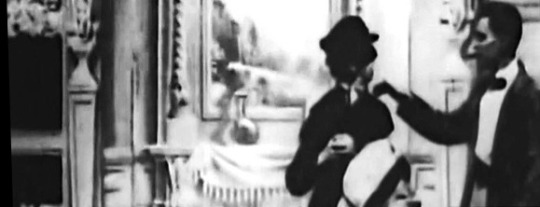
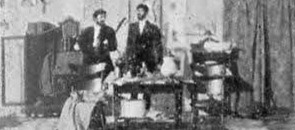
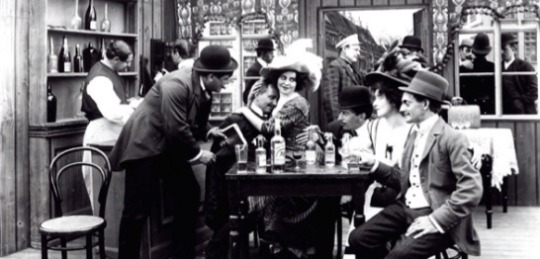

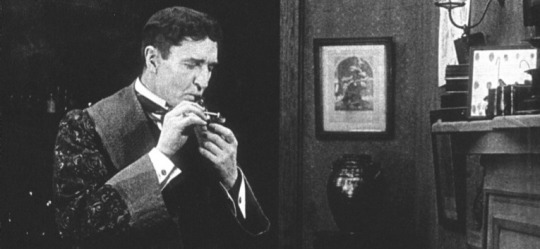

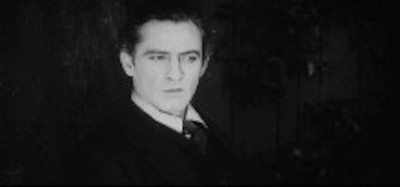
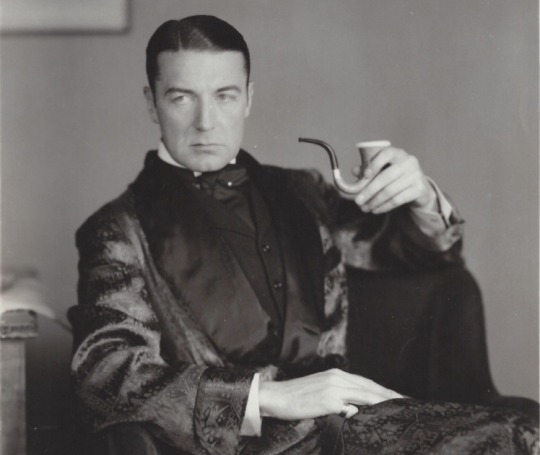

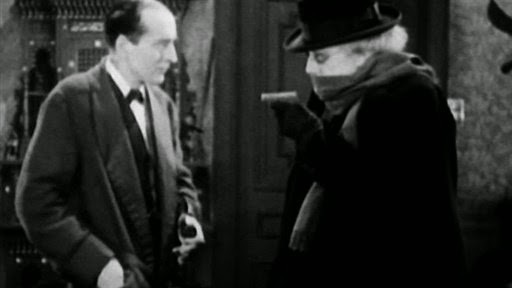
Early Sherlock Holmes films
Elementary, my dear half-wit...
Sherlock Holmes Baffled (1900) Adventures of Sherlock Holmes/Held for Ransom (1905) Sherlock Holmes i Bondefangerkløer (1910) A Study in Scarlet (1914) Sherlock Holmes (1916) The Hound of the Baskervilles (1921) Sherlock Holmes (1922) The Return of Sherlock Holmes (1929) The Speckled Band (1931) The Sleeping Cardinal (1931)
#sherlock holmes#sir arthur conan doyle#from the b-movie badlands#silent cinema#detective#classic#film history
2 notes
·
View notes
Text
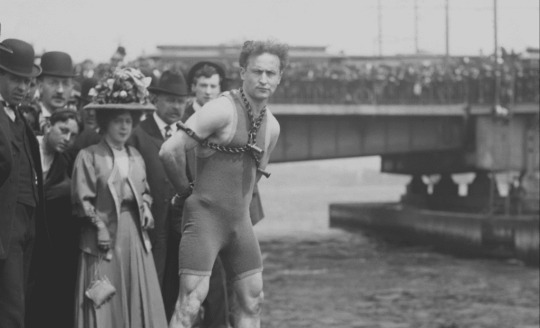
Harry Houdini (1874, Budapest – 1926, Detroit) was an American magician and illusionist of Hungarian origin. He was born in Budapest on 24 March 1874 as Erik Weisz, son of a rabbi who soon after Houdini’s birth emigrated to the United States with his family. At a very early age, Houdini started to perform in circuses, first as a trapeze artist. In 1894 he married to Wilhelmina Rahner, who was his stage assistant throughout his career under the pseudonym Beatrice. In the 1900s he gradually became known across America for his sensational escape acts. His death-defying acts included extricating from shackles, ropes, and handcuffs. During a typical performance, he would be chained and locked in a box that was dropped into deep water. Just seconds after the box submerged, he would emerge from under the water, free of all the shackles, to the great amazement of the thousands of people who would watch the act.
Houdini’s most famous and daring act was known as the Chinese Water Torture Cell. He first performed the act in 1912, but it was such a crowd-pleaser that he kept performing it until his death in 1926. As part of the act, first he was suspended by his feet upside down. With his feet locked in stocks, he was submerged into a glass cabinet full of water. To make the challenge even more difficult, the cabinet had a cage in it, which made Houdini unable to turn around. To escape from the torture cell, he had to hold his breath for more than three minutes. It was commenting on such death-defying acts that George Bernard Shaw allegedly said: ‘The 3 most famous names in history are Jesus Christ, Sherlock Holmes, and Harry Houdini.’
Modern technology, especially the spread of the motion picture also greatly contributed to Houdini’s international fame and popularity as his acts were regularly filmed between 1916 and 1923. In one of these short footages filmed in 1907 (you can watch it below) you can see Houdini being first handcuffed by a policeman, then jumping of a bridge. Just seconds after sinking into water, to the great relief of the massive crowd that gathered in Rochester to watch him perform, he bopped up to the surface, free of his shackles. Besides short newsreel footages of his stunt acts, Houdini was also engaged in producing a series of motion pictures featuring his performances. As a testimony of how popular Houdini still is, in 2008 Kino International collected the films of his most famous acts which continue to stun audiences to this day.
2 notes
·
View notes